Archocentrus nanoluteus
Scientific name: Archocentrus nanoluteus
Common name: N/A
Family: Cichlidae
Usual size in fish tanks: 5 - 6 cm (1.97 - 2.36 inch)
014
Recommended pH range: 7.1 - 8.1
Recommended water hardness: 11 - 28°N (196.43 - 500ppm)
0°C 32°F30°C 86°F
Recommended temperature range: 23 - 28 °C (73.4 - 82.4°F)
The way how these fish reproduce: Spawning
Where the species comes from: Central America
Temperament to its own species: peaceful
Temperament toward other fish species: peaceful
Usual place in the tank: Bottom levels
Food and Feeding
Archocentrus nanoluteus thrives on a varied diet. While high-quality flake or cichlid pellets should form the staple diet, supplementing with live or frozen foods like brine shrimp and bloodworms twice a week is beneficial for their health. To provide essential vegetable matter, offer blanched peas or spinach. Feeding small portions 2-3 times daily ensures optimal nutrition and helps maintain water quality.
Origin
Archocentrus nanoluteus is native to Central America, specifically the rivers and streams of Panama. These waters are clear, slow-moving, and rich in vegetation, with sandy or rocky substrates that provide shelter and breeding sites. The rivers often feature submerged logs, leaf litter, and aquatic plants, creating a diverse and sheltered environment. In aquariums, replicating these conditions with driftwood, sand, and live plants helps support their natural behavior and well-being. Examples of suitable plants include Anubias, Amazon Swords, and Java Fern.
Sexing
Males of Archocentrus nanoluteus are larger and may develop a nuchal hump as they mature. Females are smaller and can be identified by a distinctive black circle on their dorsal fin, which becomes more prominent during breeding.
Breeding
Breeding Archocentrus nanoluteus is relatively straightforward in a well-prepared tank. Provide upturned terracotta pots or caves as potential spawning sites. The female will clean the chosen site before laying her eggs on the underside of the roof. Once the eggs are fertilized, the male guards the territory while the female cares for the brood. The eggs hatch within 4 days, and the fry become free-swimming a few days later. At this stage, feed them newly hatched brine shrimp or finely crushed flakes to promote healthy growth. Maintaining pristine water conditions and a stable environment is essential for successful breeding.
Lifespan
With proper care, Archocentrus nanoluteus can live up to 10 years. Their longevity depends on maintaining high water quality, providing a balanced diet, and reducing stress through adequate tank conditions.
Suitable Tankmates
Thanks to their peaceful temperament, Archocentrus nanoluteus can coexist with other gentle fish in a community tank. Ideal tankmates include Neon Tetras, Otocinclus Catfish, and Ember Tetras. Avoid keeping them with aggressive or territorial species that may intimidate or harm them. Providing plenty of hiding spots and visual barriers, such as driftwood and plants, helps reduce stress and maintain harmony in the tank.
Short Description
Archocentrus nanoluteus is a peaceful and hardy cichlid species, making it suitable for community tanks with other gentle fish. Avoid keeping them with overly boisterous or aggressive species. They require high water quality, excellent filtration, and a well-maintained tank with plenty of hiding spots to thrive. Their small size and calm temperament make them a delightful choice for both beginner and experienced aquarists.
Picture
Bought by aqua-fish.net from jjphoto.dk.
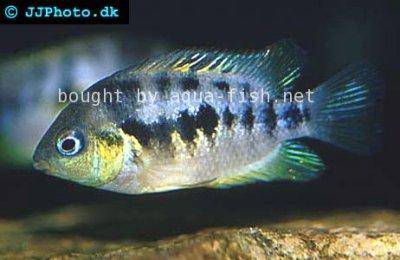

 Thread-finned
Thread-finned 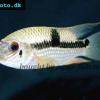 Acara
Acara  Yellow
Yellow  Patrick's
Patrick's  Blue
Blue  Green
Green 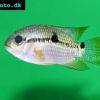 Acara
Acara  White
White  Compressed
Compressed 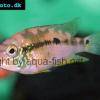 Pastel
Pastel  Midas
Midas  Red
Red  Bluemouth
Bluemouth  False
False 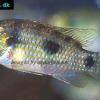 African
African  Agassiz's
Agassiz's  Banded
Banded 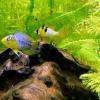 Yellow
Yellow  Cockatoo
Cockatoo  Blue
Blue  Blackstripe
Blackstripe  Highfin
Highfin  Redstripe
Redstripe  Threadfinned
Threadfinned  Macmaster’s
Macmaster’s 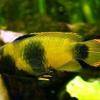 Panda
Panda  Norbert’s
Norbert’s 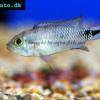 Blue
Blue  Thin-line
Thin-line  Three-striped
Three-striped  Viejita
Viejita 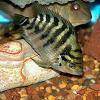 Flier
Flier  Convict
Convict  Seven
Seven  Spiny
Spiny  Oscar
Oscar  Sunshine
Sunshine  Chitande
Chitande  Firebird
Firebird  Midnight
Midnight  Lake
Lake  Sunshine
Sunshine  Aulonocara
Aulonocara  Nyasa
Nyasa 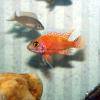 Ruby
Ruby  Grants
Grants  Aulonocranus
Aulonocranus  Chameleon
Chameleon  Benitochromis
Benitochromis  Orinoco
Orinoco  Yellow
Yellow 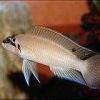 Brichard’s
Brichard’s  Guenther’s
Guenther’s  Southern
Southern  Cichla
Cichla 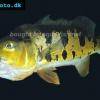 Peacock
Peacock  Chiseltooth
Chiseltooth  Bolivian
Bolivian  Red
Red  Many-pointed
Many-pointed  Jack
Jack  Red
Red  Three
Three 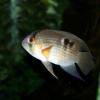 Keyhole
Keyhole  Azureus
Azureus  Red
Red  Jackson’s
Jackson’s  Crenicichla
Crenicichla  Honduran
Honduran  Blue-eye
Blue-eye  Afra
Afra 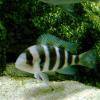 Frontosa
Frontosa  Slender
Slender  Malawi
Malawi  Chequerboard
Chequerboard  Checkerboard
Checkerboard  Malawi
Malawi  Ectodus
Ectodus  Tanganyika
Tanganyika  Canara
Canara  Green
Green  Rostratus
Rostratus  Pearl
Pearl 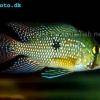 Geophagus
Geophagus  Yellowhump
Yellowhump  Suriname
Suriname  Redhump
Redhump  Red
Red  Dority’s
Dority’s  Argentine
Argentine 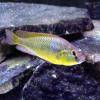 Burton’s
Burton’s  Victoria
Victoria 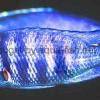 Haplochromis
Haplochromis  Jewel
Jewel  Banded
Banded 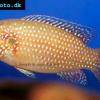 Lifalili
Lifalili  Lowland
Lowland  Texas
Texas  Pantano
Pantano  Severum
Severum  Banded
Banded 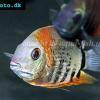 Severum
Severum  Rainbow
Rainbow  Parrot
Parrot  Chocolate
Chocolate  Brown
Brown  Marlieri
Marlieri  Golden
Golden  Striped
Striped  Masked
Masked 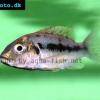 Konye
Konye  Blue
Blue  Trewavas
Trewavas  Electric
Electric  Dwarf
Dwarf  Redbreast
Redbreast  Lamprologus
Lamprologus  Gold
Gold 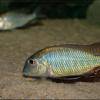 Greenface
Greenface 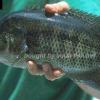 Mayan
Mayan  Aurora
Aurora  Blue
Blue  William’s
William’s 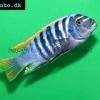 Zebra
Zebra  Malawi
Malawi  Blue
Blue 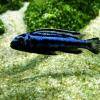 Blue
Blue  Mbuna
Mbuna  Parallel
Parallel  Purple
Purple  Flag
Flag  Bolivian
Bolivian  Ram
Ram  Basket
Basket 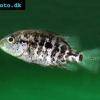 Haitian
Haitian  Zebra
Zebra  Striped
Striped  Neolamprologus
Neolamprologus  Brevis
Brevis  Fairy
Fairy 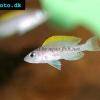 Neolamprologus
Neolamprologus  Cylindricus
Cylindricus  Hecq’s
Hecq’s  Neolamprologus
Neolamprologus  Lemon
Lemon  Mustax
Mustax  Daffodil
Daffodil  Six-bar
Six-bar  Five-bar
Five-bar  Marbled
Marbled 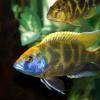 Giraffe
Giraffe  Blue
Blue  Sulphurhead
Sulphurhead  Wolf
Wolf  Jaguar
Jaguar  Blue
Blue  Marakeli
Marakeli  Madagascar
Madagascar  Pinstripe
Pinstripe  Pelmatochromis
Pelmatochromis  Kribensis
Kribensis 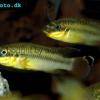 Striped
Striped  Red
Red  Deepwater
Deepwater  Fenestratus
Fenestratus  Nichols’
Nichols’  Southern
Southern  Bumble
Bumble  Demason’s
Demason’s  Slender
Slender  Red
Red  Mbuna
Mbuna  Malawi
Malawi  Kenyi
Kenyi  Powder
Powder  Altum
Altum  Angelfish
Angelfish  Angelfish
Angelfish 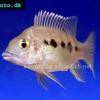 East
East  Juba
Juba  Earth
Earth 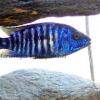 Electric
Electric  Azure
Azure 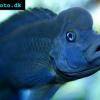 Lionhead
Lionhead  Discus
Discus  Blue
Blue  Red
Red  Zebra
Zebra  Brichard’s
Brichard’s  Blue
Blue  Firemouth
Firemouth  Zebra
Zebra  Yellow
Yellow  Blue
Blue  Dwarf
Dwarf  Blunthead
Blunthead 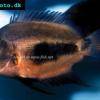 The
The  White
White  Twoband
Twoband  Fenestratus
Fenestratus  Window
Window  Tailbar
Tailbar  Black
Black  Redhead
Redhead 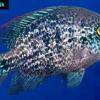 Oaxaca
Oaxaca  Xenotilapia
Xenotilapia